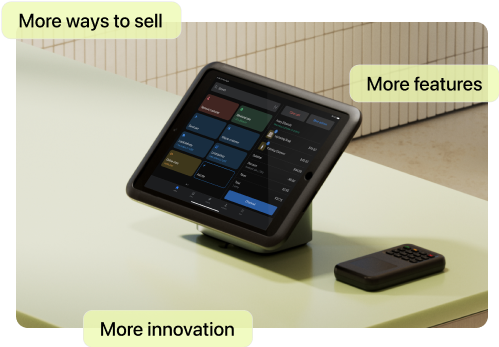You’ve almost definitely heard of the supply chain. But have you heard of the value chain, its all-encompassing counterpart?
Supply and value chains are essentially a square versus rectangle situation: Even though every square is a rectangle, not every rectangle is a square. Every element of a supply chain fits within the value chain, but not all value chain activities are included in the supply chain. Value chain management is the process of overseeing every facet of your business that increases your products’ value.
A company with optimized value chain thinking is well on its way to sustaining superior performance and delivering value at every step of the customer journey.
What is the value chain?
The value chain is every action a company takes to increase its worth in the minds of customers. When a company develops an idea, creates a good or service, markets, sells it, and then ensures customer satisfaction after purchase, all those actions fall under value chain activities. The ultimate goal is to create customer value: a consumer’s belief that your goods get them a lot of bang for their buck.
Harvard Business School professor Michael E. Porter introduced the value chain concept in his 1985 book Competitive Advantage: Creating and Sustaining Superior Performance. Since it was published, the book has become an influential part of business school instruction.
As defined by Porter, the value chain includes nine elements. The first five are primary activities (i.e., those relating directly to your company’s production and distribution systems). The remaining four are secondary activities—sometimes called support activities—which serve to supplement the primary activities.
9 value chain activities
Here are the nine activities included in the value chain, as defined by Michael E. Porter:
Primary activities
1. Inbound logistics. This is the process of sourcing, receiving, and storing raw materials from your suppliers. Some of these activities fall under inventory management.
2. Operations. The production process turns raw materials into the products you send to customers.
3. Outbound logistics. This is the process of storing, transporting, and delivering goods to end customers. Order fulfillment is one example of an outbound logistics process.
4. Marketing and sales. At this stage, you promote your products to turn prospects into customers. Creating paid ad campaigns is a common activity in this category.
5. Service. Any post-purchase support you provide your customers as they engage with your products falls under the umbrella of service. This includes things like warranties, repairs, installation help, and customer service.
Secondary
6. Procurement. This is the process of tracking down reliable sources for the materials you use to make your products. It’s a secondary activity because it doesn’t involve the actual ordering and receipt of materials themselves—just the process of finding suppliers.
7. Infrastructure. This covers the resources you devote to managing your company’s systems, from strategic management down to accounting, legal, IT, and security.
8. Human resource management. These are the activities you take in hiring and managing your employees. It starts with recruitment and onboarding and continues through work benefits and promotion cycles.
9. Technological development. These are the tools and systems you use to iterate on (and hopefully improve) the way your company works. Today, this often means SaaS solutions like customer relationship management (CRM) platforms, cybersecurity applications, and demand forecasting tools.
What is the supply chain?
The supply chain comprises every step interconnected businesses take to turn raw materials into finished products and distribute them to customers. The supply chain is a central component of the value chain.
These are the common processes that make up the supply chain, aspects of which you’ll recognize from the value chain components:
-
Product development.Product development is the process of taking your product from an idea to something people can buy. It could involve creating entirely new products or improving on existing products to drive competitive advantage.
-
Manufacturing.Manufacturing is the process of turning raw materials or parts into finished products that you sell to your customers. Efficient manufacturing is one of the most important aspects of supply chain management.
-
Fulfillment.Order fulfillment is the process of receiving and processing orders from your customers. This includes inventory management as well as picking and packing products to prepare them for shipping.
-
Distribution.Distribution is the process of then delivering the products your customers order from you. Channels can vary widely, from direct sales and retailers to wholesalers and ecommerce.
-
Customer service.Customer service is the support you give to your customers, both before and after they purchase your products. This includes responding to inquiries and proactively looking to increase customer satisfaction.
-
Returns. Returns are the option you provide customers to return your products if they find they’re unsatisfied with their purchase. In a company’s supply chain, it is also called reverse logistics, or the process of receiving and inspecting returned products to decide whether they can be repackaged and resold.
Value chain vs. supply chain: What’s the difference?
It’s easy to confuse value and supply chains. In practice, though, they’re quite different.
Here are some helpful distinctions to make sure you know which of the two chains you’re dealing with:
Focus
The supply chain focuses squarely on the flow of goods and products, while the value chain takes a broader view of everything the company does to create value for customers.
While they share some components, the supply chain deals with a narrower set of considerations than the value chain, which brings in more aspects of the overall business.
Starting point
One thing the value chain and supply chain have in common is their starting points. Both begin, essentially, with the raw materials that make up your products and how you source them.
Ending point
Where the two chains differ more, however, is where they end. Both concern products making their way to customers. However, while the supply chain stops at the physical flow of those products, the value chain factors in more aspects of the customer experience along the journey. So much so, that the value chain has less of a clear ending point altogether, putting more stock in a metric like customer lifetime value (CLV).
Activities
The activities that make up the value chain versus the supply chain have some crossover, but the two differ in scope. Much of what falls under manufacturing in the supply chain would count as operations in the value chain.
Along the same lines, fulfillment and distribution in the supply chain fall under inbound logistics and outbound logistics in the value chain. One of the biggest differences is the value chain’s inclusion of marketing and sales as a primary activity, which the supply chain doesn’t emphasize at all.
Metrics
Some of the metrics used to help analyze and optimize your supply chain are similarly useful in value chain analysis. Those include indicators like on-time delivery, order fill rate, and stock-to-sales ratio. These all help you manage the outbound and inbound logistics, which are part of the value chain too. Where the value chain starts to bring in additional metrics is with things like customer satisfaction (CSAT) scores.
Value chain vs. supply chain FAQ
Are the supply chain and value chain the same?
No, they are not. While they share some similarities, the supply chain pertains to the physical flow of goods and products, while the value chain extends to everything the company does to create value for customers.
What is a value chain, with an example?
The value chain is every action a company takes to deliver a cohesive, worthwhile brand to its target audience. For example, McDonald’s has to source all the ingredients it uses, pay its employees to cook the food, and make sure it gets to you in a timely fashion—a.k.a. the primary activities of the value chain. It must also analyze customer behavior data to phase out unpopular menu items and keep the menu focused on pleasing the maximum number of people.
What is an example of a supply chain?
Nike has a supply chain for all of its running shoes. First, it has to source the raw materials that go into its footwear, like rubber, textiles, and leather. Once those materials reach Nike factories, the company must manufacture a wide variety of shoes and properly route all its shipments, using a complex outbound logistics network, bringing the products to distribution centers like warehouses and retail locations. A distribution network then ultimately delivers the packages to customers.





